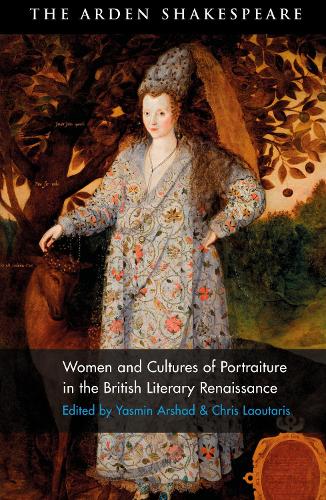
Women and Cultures of Portraiture in the British Literary Renaissance
(Hardback)
Publishing Details
Women and Cultures of Portraiture in the British Literary Renaissance
By (Author) Yasmin Arshad
Edited by Chris Laoutaris
Series edited by Catherine Richardson
Series edited by Prof Evelyn Tribble
Series edited by Helen Smith
Series edited by Professor Lena Cowen Orlin
Bloomsbury Publishing PLC
The Arden Shakespeare
13th November 2025
United Kingdom
Classifications
Tertiary Education
Non Fiction
Gender studies: women and girls
History of art
Portraits and self-portraiture in the arts
Literary studies: c 1400 to c 1600
Physical Properties
Hardback
288
Width 156mm, Height 234mm
Description
Were Renaissance women merely the silent subjects of the images of themselves they witnessed circulating in the visual cultures around them Or did they have the opportunity to challenge these figurations This collection of interdisciplinary essays examines the representation of women at the intersections between portraiture, literature and drama in Renaissance Britain. It explores how power, politics, patronage, agency and creativity were manifested across text, cultural inscription and portraiture - defined in its broadest sense as a cultural artefact expressive of female image and identity. Forms of portraiture discussed in this vibrant collection include portraits, miniatures, engravings, sculptures, embroideries, tapestries, murals, emblems, illuminated manuscripts, reliquaries, curated collections, theatrical props, calligraphy and other decorative features.
Bringing together art historians, curators, heritage specialists and scholars of early modern history, drama and literature, this collection situates women both as the subjects and devisers of cultures of portraiture. The essays in this volume examine how power was negotiated through the royal icon; how self-portraiture became a means of navigating the dangerous worlds of religious and courtly factionalism; how the commissioning, collecting and curating of paintings, relics and life-writings fashioned shared testaments of faith and enabled female networks across political and pedagogical arenas; how drama staged the anxieties surrounding a threatening female agency; and how creativity wielded through narrative prose fiction, illuminated manuscripts and poetry, allowed women to co-opt and subvert prevailing visual tropes and stereotypes. In the process, it reveals how women were both the interrogators and active co-creators of their own self-images, re-defining their portraits as forms of public identity-building and political commentary, as well as tools for social disruption and the realization of their dynastic ambitions.
Author Bio
Yasmin Arshad is Honorary Research Fellow, Centre for Early Modern Exchanges,School of European Languages, Culture & Society, University College London, UK.
Chris Laoutaris is Senior Lecturer at the Shakespeare Institute, University of Birmingham, UK.
